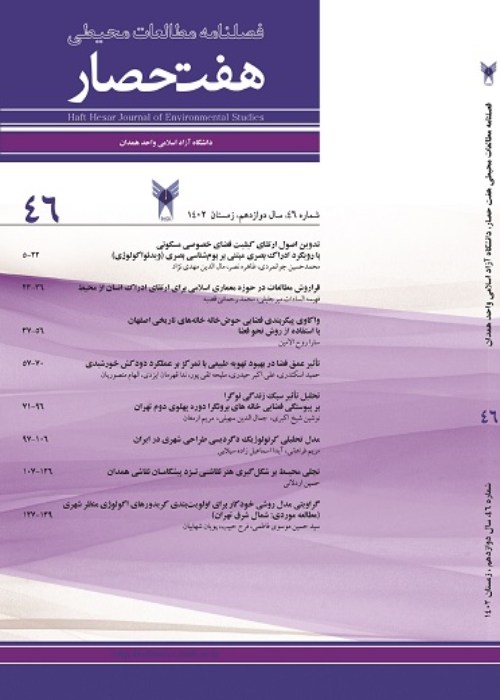Evaluation and analyzing physical location components influencing on the thermal performance of residential complexes; a case study of Hamedan
Increase in urban population and development of cities has led urban planning and designing into a new stage of sustainable development so that the importance of effective energy design to develop cities sustainably, especially in urban housing, seems vital. One of the main principles of sustainable climate development is to examine how residential buildings are suited to enhance their thermal performance in cities. Therefore, this study aims to examine the components and geometrical indices of physical location influencing thermal performance in the design stage in the Cold semi-arid climate of Hamedan. The factors influencing the thermal performance of physical location regarding theoretical foundations and the literature were investigated. The physical location of residential complexes has different influencing factors for saving energy, such as the direction of the buildings, the form of mass-space at the site, and the height (density) with various geometrical characteristics.
The research method combines qualitative (descriptive, analytical, and field observation) and quantitative (energy simulation data) methods. Data analysis was conducted using statistical methods, correlation test, ANOVA, T-test, and comparison with the reference model. The independent variable is physical location components (direction, mass-space, and height), and the dependent variable is annual energy consumption.
15 residential buildings were coded and simulated by identifying four main groups and their subgroups in Hamedan. The findings revealed that physical location components influence energy consumption intensely. Choosing the proper direction can save a significant amount of energy in most patterns, mostly linear patterns. Correlation analysis among geometrical indices influenced by mass-space and energy consumption indicates a direct and intense relationship. The fewer amounts of indices, including the window–to–gross area, the ratio of area-to-mass, the, and occupation level line are, the more energy is saved. Then they are regarded as the main priority of designing. Increase in height and its influencing geometrical indices leads to a decrease in cooling energy consumption and has different results in the consumption of heating energy and the total energy.
The most optimal physical location is west-east oritation, and the least suitable one is north-south to 120 degrees. Dense patterns with fewer occupation level lines are the most suitable mass-space pattern in residential complexes. By comparing the patterns with the reference model, linear patterns with an average of 13.05% energy saving are optimal. Sparse patterns are the most inefficient, with an average of 5.86% saving, and dense and combined patterns have moderate energy saving. Patterns with the most area to the volume of blocks are not considered suitable in a cold climate for residential complexes. Correlation analysis between height (increase in surface-area-to-volume ratio and H/W) and energy consumption shows that among the six patterns being investigated, there is an increase in consumption in 2 patterns, and in the other six patterns, there is a noticeable decrease in energy consumption.
- حق عضویت دریافتی صرف حمایت از نشریات عضو و نگهداری، تکمیل و توسعه مگیران میشود.
- پرداخت حق اشتراک و دانلود مقالات اجازه بازنشر آن در سایر رسانههای چاپی و دیجیتال را به کاربر نمیدهد.


